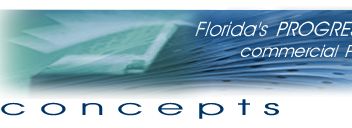W
|
|
waffling
|
See embossing.
|
|
warm color
|
A red tone rather than a blue tone. Orange, red, and yellow
are generally considered to be "warm" colors.
|
|
wash drawing
|
A black and gray watercolor with black line art which will
be reproduced as a halftone.
|
|
Wash marks
|
An uneven or lighter density on a print's leading edge created
when the printing plate has too much water. Other Term: water
streaks.
|
|
water finish
|
A gloss created on paper by applying water to the paper web
as it passes through rollers that "iron" and compress the
paper fibers.
|
|
Water streaks
|
See: wash marks.
|
|
Water-based ink
|
An ink that uses water as the drying agent rather than a
solvent.
|
|
watercolor
|
Artwork created by applying translucent water soluble paint
or dyes to a paper substrate.
|
|
waterleaf
|
A highly absorbent paper.
|
|
waterless printing
|
See lithography (waterless).
|
|
watermark
|
A translucent mark or image that is pressed into fine paper
during the paper making process and which is visible when
the paper is held up to a light.
|
|
wavy-edged paper
|
Paper with wrinkled or wavy edges caused by water damage.
|
|
waxer
|
A machine that melts and applies a thin coating of adhesive
wax to a paper. Once often used to create camera ready artwork,
this process has been largely replaced by computerized film,
paper, or plate devices.
|
|
web
|
A roll of paper or other material that is fed by rollers
through a printing or converting process. Also see: sheetfed
press.
|
|
Web offset
|
A continuous band of substrate fed from a wound roll through
an offset printing press.
|
|
Web press
|
A rotary press that prints on a continuous web, or ribbon,
of paper fed from a roll and threaded through the press. See
also: sheetfed press. 68
|
|
webfed
|
A printing press that uses a web, not cut sheets. See also:
sheetfed.
|
|
wedding paper
|
An elegant, refined paper with minimum glare.
|
|
weight
|
See: basis weight.
|
|
Weight (character)
|
A description of typographic forms or variations (e.g., light,
regular, bold, extra bold).
|
|
well
|
An individual etched gravure pit.
|
|
wet printing
|
Printing on ink that is still wet with a second or different
color. See also: trapping.
|
|
Wet rub
|
A measure of a material's resistance to rubbing while it
is wet. See: abrasion resistance.
|
|
Wet strength
|
A measure of a wet paper's resistance to pulling or bursting.
|
|
Wet trapping
|
Overlapping an ink that is still wet with a second or different
color. See also: trapping.
|
|
Wet-on-wet
|
See wet trapping.
|
|
Wet-strength paper
|
A water and tear resistant paper that when wet retains a
minimum of 15% of it's dry tensil strength.
|
|
wetting up
|
A screen printing term referring to placing ink in the screen
and distributing it evenly with the squeegee in preparation
for production.
|
|
what-you-see-is what-you-get (WYSIWYG)
|
Used when a computer application shows an image's position,
size, elements, etc. on screen as it will be printed.
|
|
white
|
A combination of all the color wave lengths. A color visually
equivalent to natural sunlight. See also: white light.
|
|
White light
|
Natural sunlight or light created by combining equal portions
of each light wavelength from 400 to 700 nm. See spectrum;
visible spectrum.
|
|
White space
|
That part of an image that is free of text or images.
|
|
widow
|
A word, partial word or short line of text at the end of
a paragraph, or a single line of text at the top of a page.
See also: bad break; orphan.
|
|
wire stitch
|
See: saddle stitch.
|
|
wood cut
|
A printing method that uses a carved wood block or surface
as the printing plate. The non-image areas are carved away,
and ink is applied to the remaining raised areas. Other Term:
wood engraving.
|
|
Wood engraving
|
See: wood cut.
|
|
Wood free
|
Paper made without groundwood or mechanical pulp. Other Term:
groundwood free.
|
|
Wood type
|
Letters carved into blocks of wood. See also: wood cut.
|
|
word processor
|
A software application used to create text documents (e.g.,
Microsoft Word).
|
|
word wrap
|
The process by which a computer application automatically
moves a word to the next line down when the available line
space for text has been used up. This occurs without the person
using the application pressing the "return" key. This feature
can also create problems for those printing someone else's
file, since the words may also automatically "shift" when
opened on a machine other than the one that created the document.
As a result, some words may move to a location that is unacceptable
to the original document's creator. This is why printers request
all the image and font files together with a document, or,
as an alternative, a PostScript or PDF file.
|





